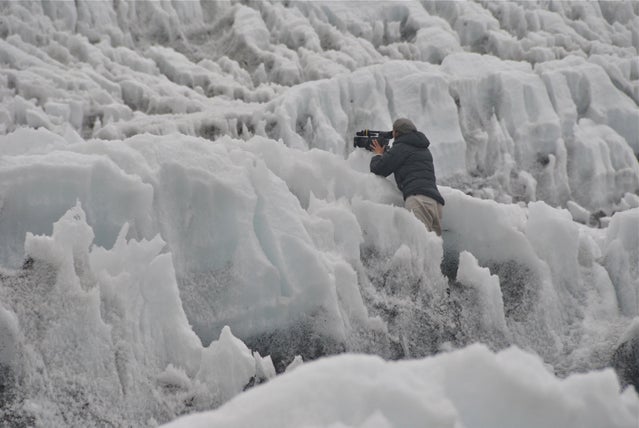At the age of 40, photographer and journalist decided to switch careers. After attending film school at Capilano College and realizing that Final Cut allowed her to edit films easily, she set off as an independent filmmaker. She’s made two films, including , which examines how the Mount Everest of our dreams is beset by problems of commercialism, pollution, and overuse. Now, she’s hammering out the details of a return to Everest so she can shoot an eight-part documentary TV series to be released in December, 2012. We caught up with her this week as she works on a new fellowship from the .
��
Had you spent much time at Everest?���� ��
I grew up with the picture of Hillary and Tenzing in my bedroom—and here are these two men who had climbed the mountain together and neither of them had ever admitted, despite a lot of media pressure, who had stood on the top first. There was something really noble about that story, and I really loved it.
With that in mind, I went to Everest in 2007, commissioned to write an article about Base Camp, and when I got there, I was really disillusioned. There was litter everywhere, and I was hearing stories of oxygen tanks being stolen at Camp 4, and it was the exact opposite of what I had learned, and what my experience had always been in the mountains. ��
What made you want to return to make a film?
I thought, I gotta’ go back there as a filmmaker, because there’s something here. That mountain has been a metaphor for human ambition for a lot of people, and that mountain has changed—that metaphor has changed. How is the microcosm of what’s going on here a reflection of a greater truth of what’s going on everywhere?
And why 40 days?
Just before I left, I had read this quote, with which I open the film: “To know a person, you must spend 40 days with them.” That quote was so great, because, had I just shown up at Everest for a week, I would have made a different film. I would have been far more judgmental.
Forty days is also a tie-in in religious terms, usually referring to a testing period, or a time for reflection. It also happens to be about the average time for a climbing season if you go to Everest, because you have to acclimatize.
You describe Everest as having become a mountain theme park. What strange surprises did you find?
One person in the film had never seen snow before—had never seen a mountain before. She was 18 years old, and she was there to climb Mount Everest. There’s a whole new industry in extreme tourism, and it’s a far cry from Tenzing and Hillary, who spent years and years training. ��
In terms of the garbage, it’s wild—it really amazed me, and I thought that I was fairly well-read. I mean, I had read the National Geographic articles about the garbage on the mountain. It’s not like my film is breaking a new story there. It’s just showing you what most people have already heard about. Still, I had no idea until I got there that there would be 800-1000 people, with tents scattered over an 80-acre chunk of rotting ice. ��
The other strange thing about Base Camp is that there’s nobody in control there: it’s a town without a sheriff; it’s a beehive without a queen. So when these dead bodies started surfacing due to glacial melt, nothing was done for 30 days. We’re getting our drinking water from the ice. It’s a campground and a human morgue right now.
What needs to change at Everest?
I can’t be the one to say. There is a local woman in my film, one of the first Nepali women to climb Everest, and she says, people should stop climbing for a few years and just clean the mountain: Get the 250 dead bodies off it; pick up the garbage. But the problem with that is there are thousands and thousands of local people earning their living from this industry now. Sherpas are able to send their kids to universities. It’s the catch 22 of development. ��
Did you hear about the controversy over a plan for porta-potties on the mountain?
Hey, I’m for it. Right now, everybody’s crapping in a bucket. Then these 80 pound buckets are put on porters’ backs and walked out. I just read, somebody discovered a pit right down by the river where they were dumping all this shit. They’re taking it off the mountain, but it’s still not being properly dealt with—same with all those bags of garbage that they haul out. It’s all very nice and poetic—but where is all that garbage going? It’s going off a cliff at 14,000 feet. It’s a sad statement about who we are, but it’s a perfect microcosm of what’s going on in the world right now.


